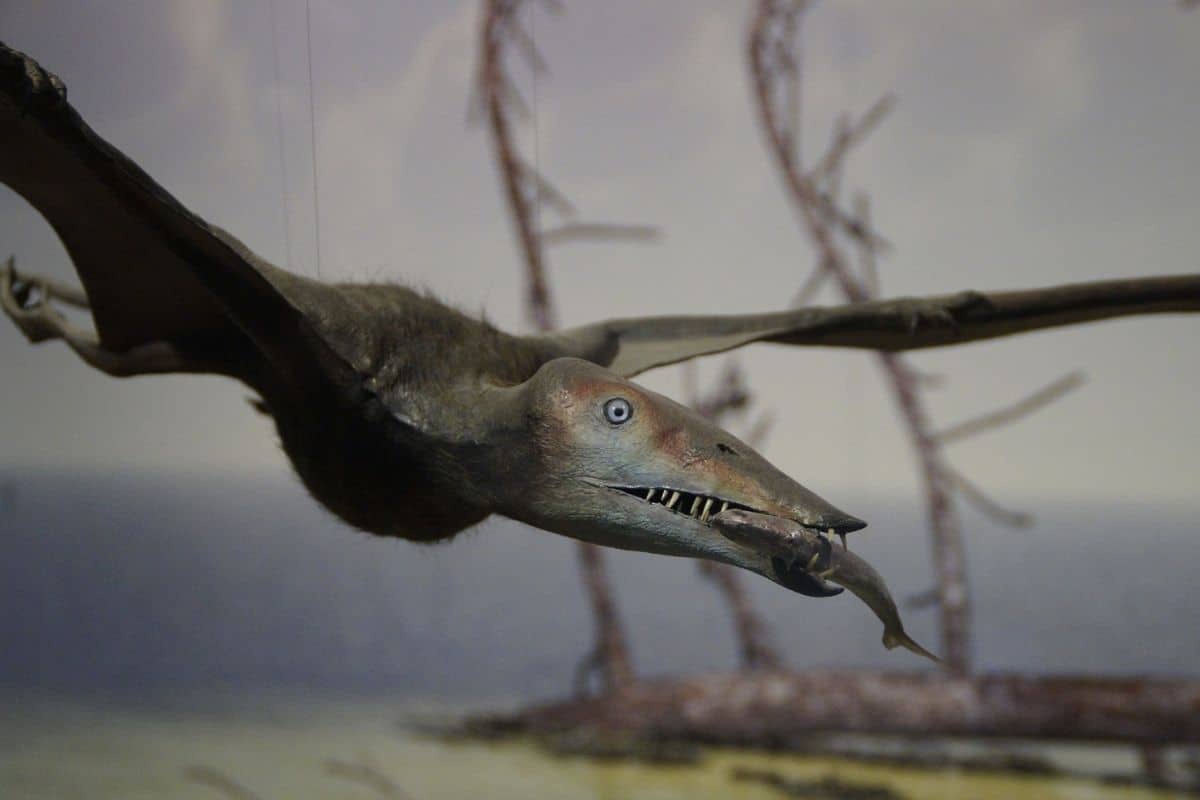
Difficult to digest food was possibly thrown out again by the pterosaurs.
Researchers write that in the magazine Philosophical Transactions of the Royal Society B† They come to that conclusion after taking a closer look at two pterosaurs recovered in China. The pterosaurs both belong to the genus Kunpengopterus sinensis and were both found in the company of a pile of bones located just next to their heads. In their study, the scientists now argue that these are pellets. And that tells us more about the diet and the still enigmatic digestive system of the now extinct flying reptiles.
Bromalites
The scientists turned to the study of an adult and young adult pterosaur from the late Jurassic. Besides the fact that the pterosaurs belong to the same genus and have been recovered quite completely, they have something in common: a bromalite – fossilized remains from a digestive tract – has been found nearby. “Both bromalites are located outside the body cavities,” the researchers write. “Suggesting that they were expelled shortly before death or perhaps even during death.”
Vomit or feces?
Now bromalites come in two types: vomit and feces. However, the researchers are convinced that we are dealing with vomit in this case. For example, in both cases the bromalite is simply too large to leave the body through the back. The composition of the bromalites also indicates that these are pellets, the researchers say. They largely consist of fish scales. “Indigestible parts of prey – such as hair and fish scales – are often found in the pellets of today’s birds.” In the case of the adult pterosaur, the position of the pellets – close to the mouth – also indicates that they were excreted through the mouth rather than through the buttocks.

Here you see the two pterosaurs. The green arrows indicate the bromalites. One bromalite is almost spherical and has a diameter of 10-12 millimeters. The other is somewhat elongated and measures 42 by 16 millimeters. Image: The Royal Society.
Previous studies
The idea that pterosaurs produced vomit balls is not new. In the past, there have been previous studies presenting possible pterosaur pellets. But some of those studies have already been debunked, and others have proved inconclusive on their own. But with the new study, new evidence has been found that the pterosaurs may have spawned pellets. “Given the small distance between the skeleton and the bromalite and the absence of other animals, we can safely assume that the balls were produced by the pterosaur next to it,” the researchers write. And there are also several indications that it concerns pellets and not faeces.
If the researchers are right, fossilizing the pterosaurs along with their vomit balls could provide valuable insights into the flying reptiles’ still rather enigmatic diet and digestive tract. For example, the alleged vomit balls indicate that pterosaurs – like owls, for example – had two stomachs: one to digest food and one to collect indigestible food and knead it together into a ball that can be regurgitated at a later stage. In addition, the fact that the purported vomit balls consist largely of fish scales suggests that pterosaurs were piscivores (i.e. mainly ate fish). Although the researchers were unable to identify the fish species consumed by the pterosaurs, they can conclude based on the scales in the purported vomit balls that the adult pterosaur had captured a large fish, while the smaller pterosaur had captured a large fish. average size. It indicates that the pterosaurs hunted the same fish throughout their lives, but shifted their focus to larger specimens as they grew themselves. And the hard-to-digest parts of that fish were possibly just as easily pushed out again by young and older pterosaurs.
Source material:
†Two emetolite-pterosaur associations from the Late Jurassic of China: showing the first evidence for antiperistalsis in pterosaurs– Philosophical Transactions of the Royal Society B
Image at the top of this article: Efraimstochter (via Pixabay†